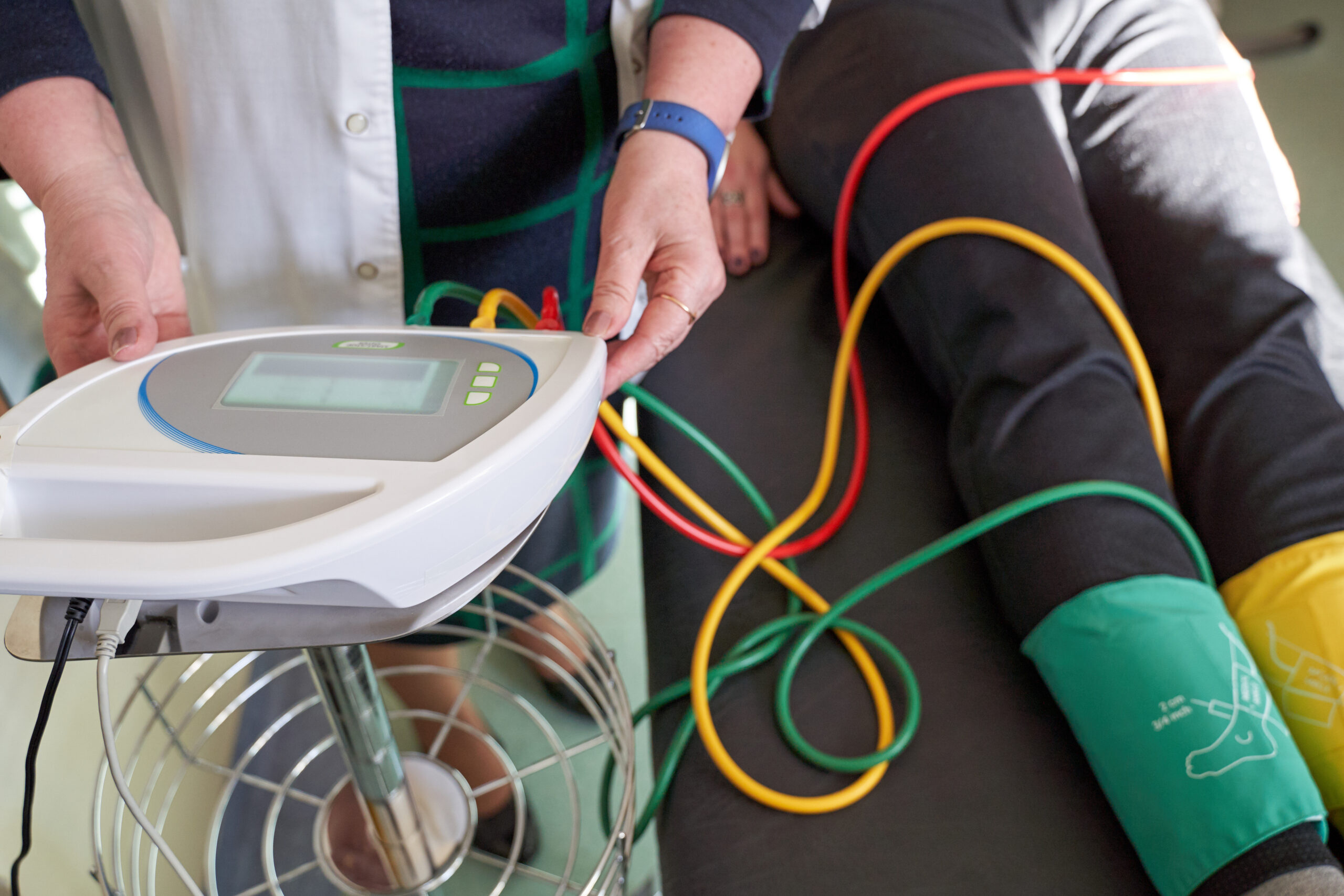Peripheral arterial disease, or PAD, affects many people throughout their lifetime and is often referred to as simply ‘poor circulation’. If you’ve heard the term being used, the person is likely experiencing a type of peripheral vascular disease affecting the network of blood vessels.
In this article, Team Medical Supplies will explain what the disease is in more detail and how you can detect it in patients.
What is Peripheral Arterial Disease?
PAD is a condition of reduced blood flow to areas of the body. When someone has PAD, it means their arteries have narrowed and the extremities of the body, like arms, legs, fingers and toes, receive less blood, and their functional abilities are reduced. While it’s commonly felt in the feet, you can also experience PAD in your kidneys, stomach and head.
These body parts experience symptoms of reduced blood flow during PAD, which include cramping when the body is moving (which goes away when resting) and numbness or tingling sensations. PAD can worsen over time, and the arteries can continue to narrow, reducing blood flow even more and increasing the chances of a heart attack or stroke.
If you think someone is experiencing PAD, it’s essential to confirm the diagnosis and help them seek treatment to resolve the condition early. However, it isn’t always easy to know if what you’re experiencing is PAD or just a temporary stint of poor circulation from, say, crossing your legs for too long.
Detecting PAD through Ankle-Brachial Index (ABI)
Thankfully, there is a quick and straightforward way to detect PAD so sufferers can promptly find the right treatment. The
ankle-brachial index test test can check for PAD by measuring your blood pressure at your ankle and your arm. The test compares the two results, and a low-ankle-brachial index number means that the blood flow in your legs is lower than in your upper body. This means there is a narrowing or blockage of the arteries in your legs, reflecting the presence of PAD.One way to perform the test is to measure the blood pressure before or straight after exercise using your legs, so practitioners will often do it after the patent walks on a treadmill. This is when blood should be more active in its circulation around the body, so if there is a narrowing or blockage, it’s easiest to detect it at this time.
What to expect from the ABI test
Whether you’re administering the test to a patient or seeking advice on what you can expect when you receive the test for yourself, here’s a quick guide:
Before and during the test
You might be asked to rest before the test. By relaxing for 5 to 30 minutes before testing, your blood can return to its normal flow state. You’ll likely be asked to lie on your back on top of a medical bed before a medical practitioner measures your blood pressure in both ankles and arms. It’s measured through an inflatable cuff, like the ones that measure your heart pressure in a regular check-up.
After the test
The test should be short, only taking a few minutes to complete. The procedure is non-intrusive, so there are no precautions to consider afterwards. Your medical practitioner will discuss your results with you and can advise on how to progress if there is a need for treatment.
Find Out More on Ankle Brachial Index (ABI) & PAD with Team Medical Supplies
Team Medical Supplies places the needs of our customers first. If you have any questions about our products, one of our professional staff members would be more than happy to answer them for you. You can reach us by calling 1300 22 44 50 or filling out a short contact form on our website.

